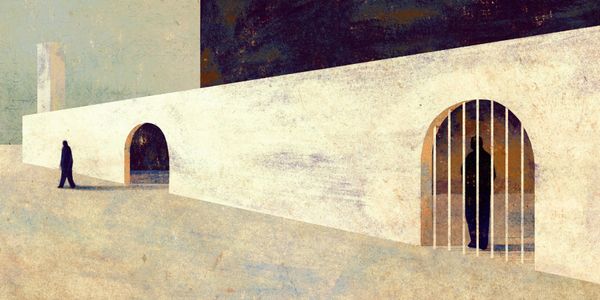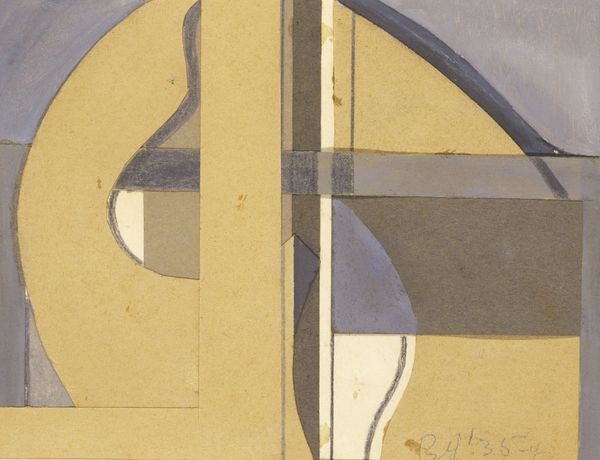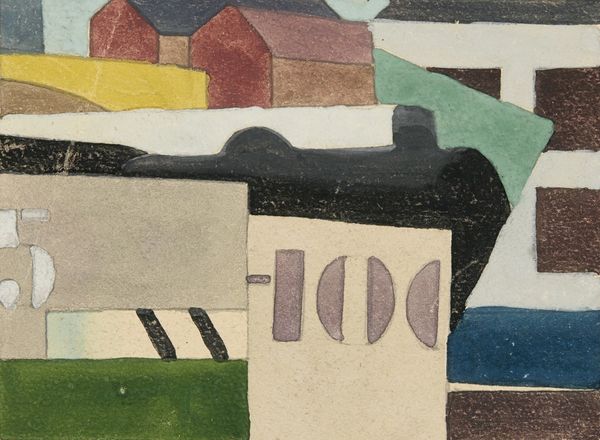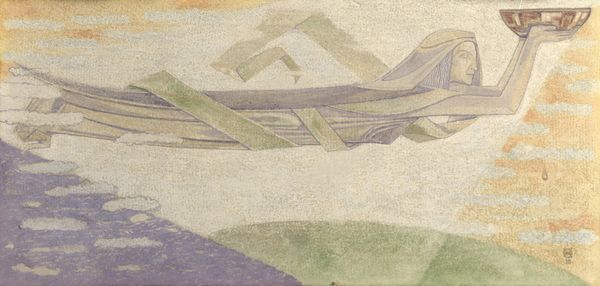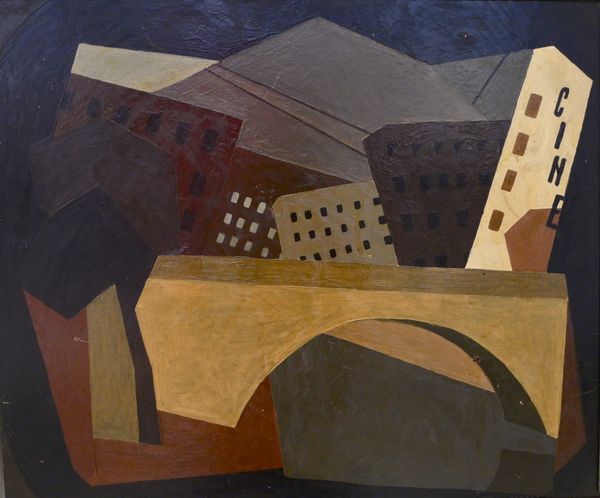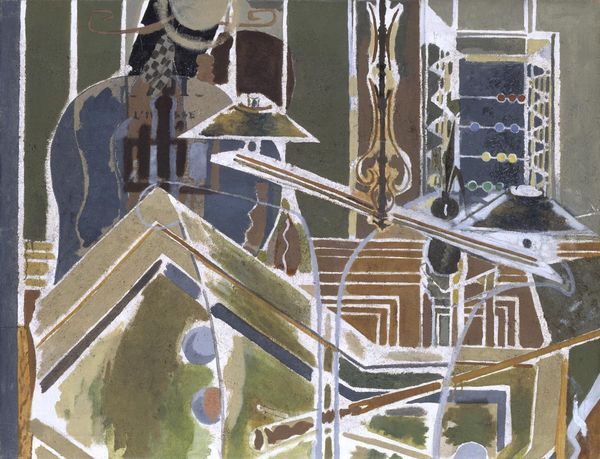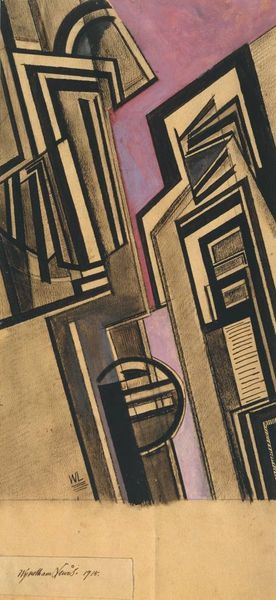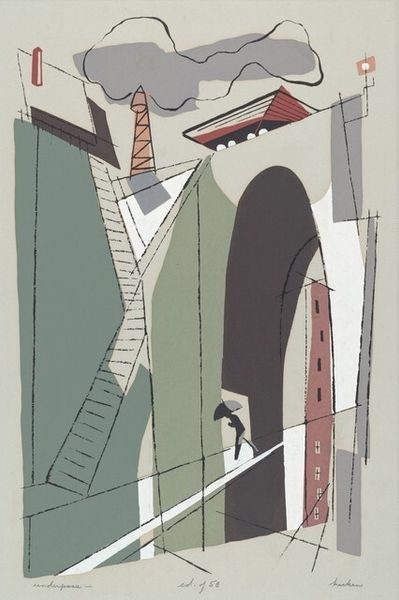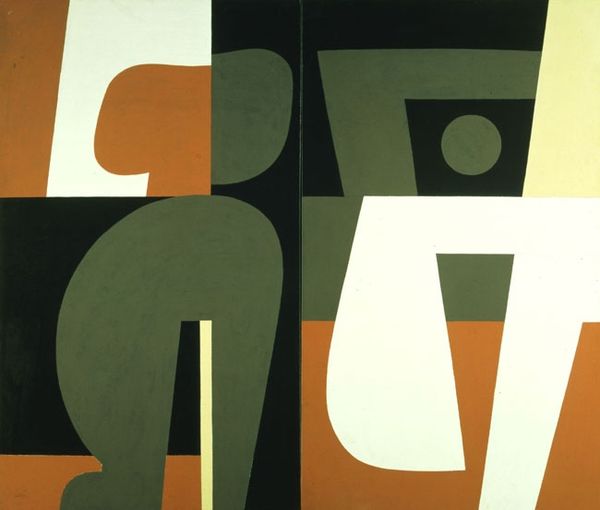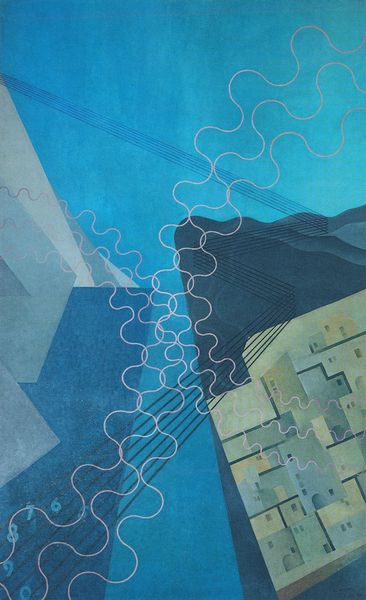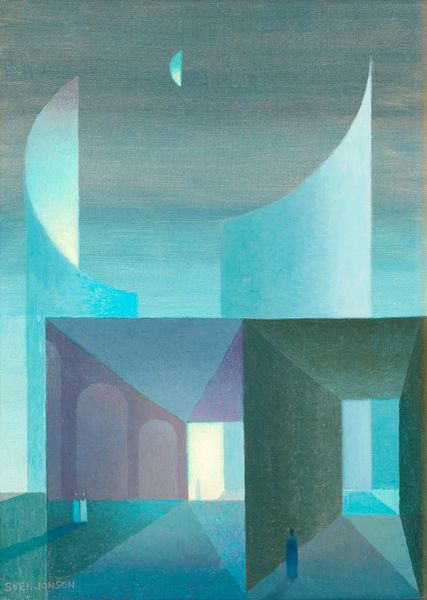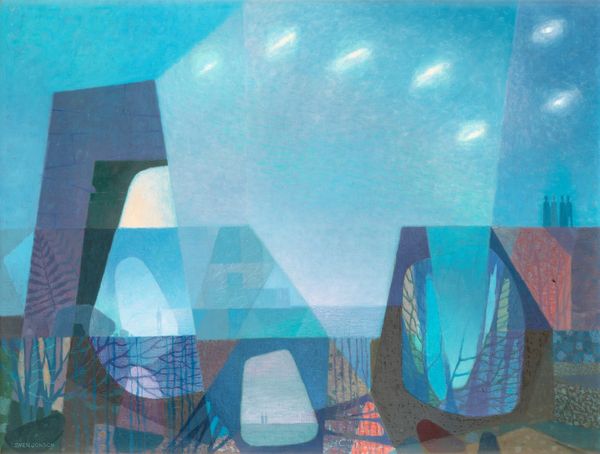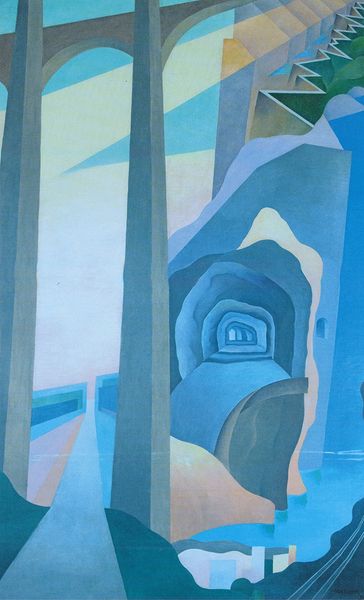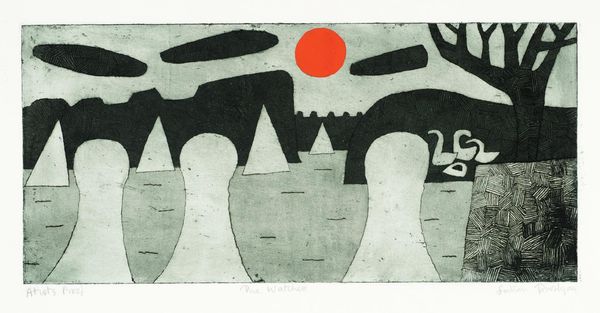
mixed-media, collage
#
mixed-media
#
collage
#
painted
#
geometric
#
abstraction
#
modernism
Copyright: Balcomb Greene,Fair Use
Editor: This is an intriguing collage, "Untitled (35-14)," created by Balcomb Greene in 1935, using mixed media. I'm really drawn to the layering and the unexpected combination of textures, but its geometric abstraction makes me wonder about its underlying meaning. What do you make of this piece? Curator: Considering this was made in 1935, a time of significant social upheaval, particularly in America, one could argue the abstract geometric shapes might be a reflection of a society being restructured. It's important to remember the context – the Depression, the rise of totalitarian regimes in Europe – and ask ourselves, how might these forces have shaped the artist’s perspective and aesthetic choices? Do you notice anything about the source materials? Editor: I see printed papers that look almost like blueprints mixed with painted areas…like architectural or design documents of some kind. Curator: Exactly. In that light, we can ask if these fragments of everyday design reflect the artist’s comment on utopian ideals and modernist design principles versus the gritty reality of the time? Remember the public role of art expanded vastly in the ‘30s, and abstraction became another way to represent the complexities of the era. The political charge of images even in abstraction, could make it accessible and revolutionary, both simultaneously. Editor: So the collage medium, combining seemingly disparate materials, is not just a formal technique, but also a statement in itself? Curator: Precisely. It reflects the fractured, sometimes chaotic, state of the world while pointing towards reconstruction or new formations. A visual metaphor for the social and political landscape. Editor: I hadn’t thought about it that way! Seeing it through the lens of its historical context makes the abstract composition so much more engaging. Curator: The politics of imagery extends even to seemingly non-representational works. Analyzing it within its specific time allows a greater understanding of how art intersects with and reflects broader social concerns.
Comments
No comments
Be the first to comment and join the conversation on the ultimate creative platform.
